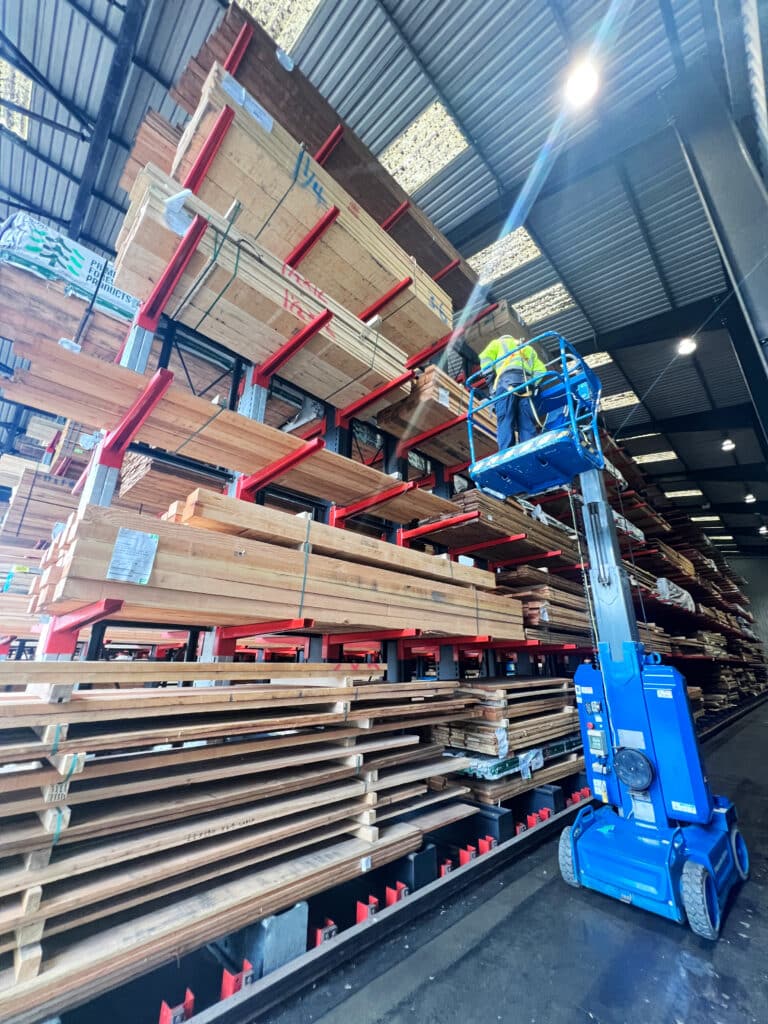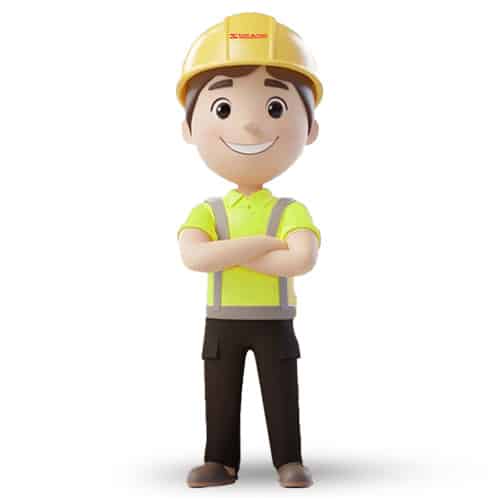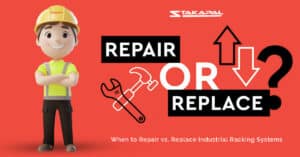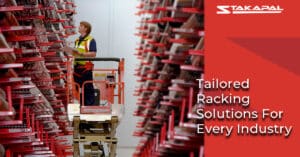Understanding Racking System Longevity
Industrial racking systems are designed for durability, but over time, wear and tear can compromise safety, efficiency, and compliance with industry regulations. Routine inspections and maintenance can extend the lifespan of your racking, but there comes a point where repairs may no longer be sufficient. The decision to repair or replace depends on several factors, including safety, cost, and operational efficiency.
Signs That Indicate Repairs Are Needed
Not all racking system damage requires full replacement. Some issues can be effectively addressed with timely repairs, helping to extend the lifespan of your system. Common signs that indicate repairs are a viable option include:
Minor Dents Or Bent Frames
Minor dents or bent frames that do not impact the load-bearing capacity or overall structural integrity.
Loose Fasteners Or Missing Bolts
Loose fasteners or missing bolts that can be easily replaced to restore stability.
Localised Rust Or Corrosion
Localised rust or corrosion that can be treated without compromising the racking’s structural strength.
Slightly Misaligned Beams
Slightly misaligned beams that can be adjusted without extensive structural work.
Damage To Protective Accessories
Damage to protective accessories like Racking Safety Barriers and Post Protectors, which can be replaced to maintain racking integrity.
If these issues are identified early – whether it is by the PRRS or when an annual inspection conducted by a SARI (SEMA Approved Racking Inspector) – and addressed properly, repairs can keep your system functional and safe without the need for a costly replacement.


Stakapal are full members of SEMA (Storage Equipment Manufacturers Association), with our installation and inspection teams fully SARI (SEMA Approved Rack Inspector), and SEIRS (Storage Equipment Installers Registration Scheme) registered.
When Replacement is the Better Option
In some cases, repairing damaged racking may not be the safest or most cost-effective choice. Situations where full replacement is the best option include:
Severe Structural Damage
Severe structural damage, such as deep bends, cracked welds, or twisted uprights that compromise weight capacity and stability.
Racking That Fails Compliance Inspections
Racking that fails compliance inspections, indicating that it no longer meets safety standards set by HSE or other regulatory bodies.
Recurring Repair Costs
Recurring repair costs that add up over time, making replacement a more economical long-term solution.
Outdated Racking Configurations
Outdated racking configurations that no longer suit your operational needs, such as inadequate height, depth, or beam spacing for modern inventory
Significant Corrosion Or Rust
Significant corrosion or rust that weakens the structure beyond safe usage.
If your racking system is consistently requiring repairs or is no longer compatible with your warehouse operations, replacement can provide a safer and more efficient solution.
Cost Considerations for
Repair vs. Replacement
At Stakapal, we understand that cost plays a significant role in determining whether to repair or replace a racking system. While repairs may seem like the more cost-effective option in the short term, ongoing maintenance expenses can add up.
Consider these cost factors:
- If repair costs exceed 50% of the replacement cost, a full upgrade is often the more economical choice.
- Replacing outdated racking can improve warehouse efficiency, reducing operational costs over time.
- Upgrading to modern, high-capacity racking can accommodate increased inventory needs and enhance workflow.
- Investing in a new system with advanced safety features can reduce the risk of workplace injuries and associated liabilities.
Making the Right Decision for Your Business
The decision to repair or replace an industrial racking system should be based on a thorough assessment of damage, safety considerations, and long-term cost implications. Regular inspections and preventive maintenance can help extend the lifespan of your racking, but when damage becomes extensive, replacement may be the best path forward.
Need Expert Advice?
Unsure whether to repair or replace your racking system? Get in touch with our experts at Stakapal for a free consultation today! Our team can help you determine the most cost-effective and safe solution for your warehouse operations.




